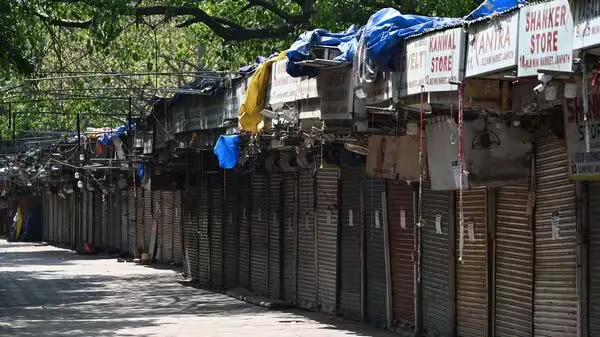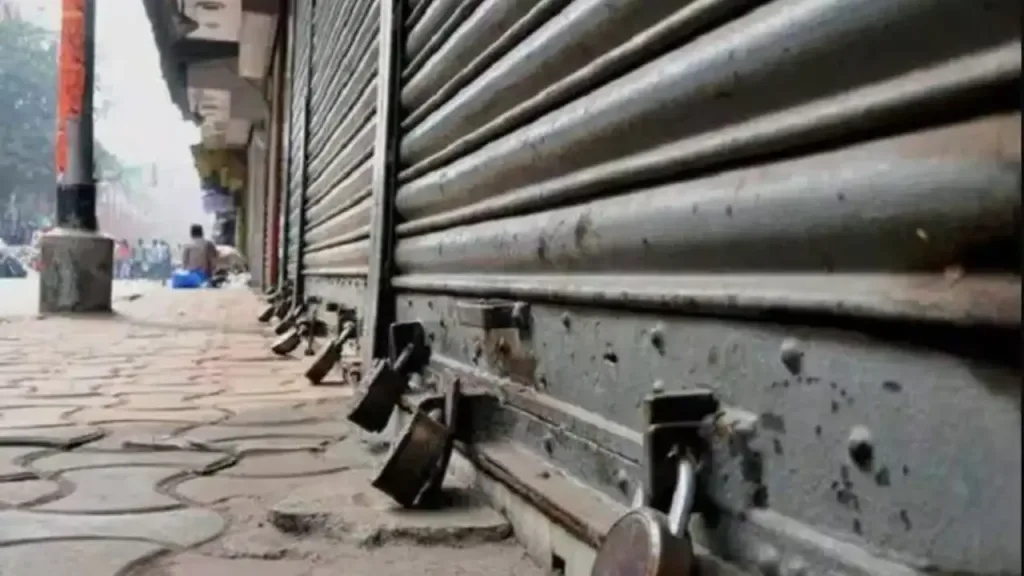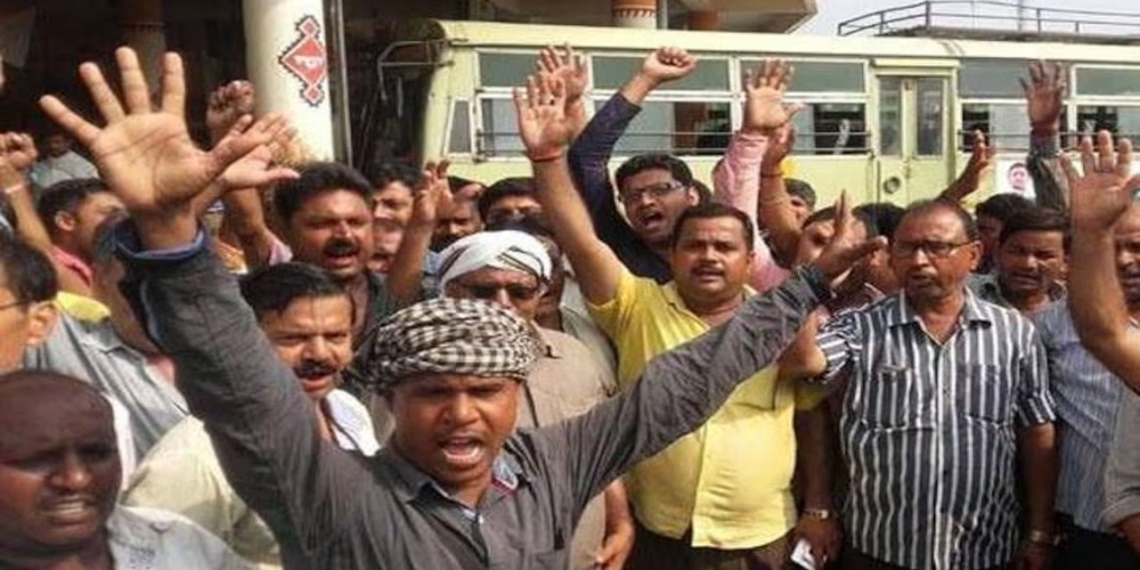India witnesses one of its largest labor movements as over 25 crore workers participate in a nationwide strike on July 9, 2025. A consortium of 10 central trade unions has called for this “Bharat Bandh” to protest what they describe as “anti-worker, anti-farmer and anti-national pro-corporate policies” of the central government.
Table of Contents
Bharat Bandh Updates: Key Demands and Objectives
The nationwide strike represents a unified response from organized labor against recent government policies. Organised by a forum of ten central trade unions, the strike or ‘Bharat Bandh’, seeks to protest what the unions describe as “anti-worker, anti-farmer, and anti-national pro-corporate policies” of the Centre.
The primary opposition centers around new labor codes, privatization policies, and what unions perceive as systematic weakening of worker rights. Unions are opposing the four new labour codes, contractual hiring, privatisation, and the lack of wage hikes or job creation. They allege the new codes are designed to “suppress and cripple” trade unions, extend working hours and weaken workers’ rights.

Bharat Bandh Impact: What’s Open and What’s Closed
| Sector | Status | Impact Level |
|---|---|---|
| Banks | Closed | High – All public sector banks affected |
| Transport | Disrupted | High – Bus services, autos, taxis affected |
| Schools/Colleges | Open | Low – No official closure notice |
| Railways | Operating | Medium – Possible localized disruptions |
| Postal Services | Closed | High – Complete shutdown expected |
| Coal Mining | Closed | High – Production halted |
| Insurance | Closed | High – Offices and services affected |
| Construction | Closed | High – Site work suspended |
Key Participating Trade Unions
The strike involves major trade unions representing diverse sectors across India. While specific union names vary by source, the coalition includes prominent organizations like the All India Trade Union Congress (AITUC) and other central trade unions representing millions of workers.
Notably, the Bharatiya Mazdoor Sangh (BMS) has opted out of the strike, stating “The Bharatiya Mazdoor Sangh vehemently opposes this strike and appeals to its unions not to participate in any such strike on July 9, 2025”, highlighting divisions within the labor movement.

Primary Grievances Behind the Strike
The trade unions have raised several critical concerns that have led to this massive mobilization:
Labor Code Opposition: The new labor codes are viewed as fundamentally undermining worker protections and union rights. These codes consolidate existing labor laws but unions argue they dilute worker safeguards.
Privatization Concerns: Government policies promoting privatization of public sector enterprises are seen as threatening job security and worker benefits.
Wage Issues: Lack of significant wage increases and job creation policies has created frustration among workers facing inflation and economic pressures.
Contractual Employment: Increased reliance on contractual hiring rather than permanent employment is viewed as reducing job security and benefits.
Impact on Banking and Financial Services
The banking sector faces significant disruption during the Bharat Bandh. Public sector banks, which employ unionized workers, are expected to remain closed, affecting routine transactions, loan processing, and customer services. ATMs may face cash shortages due to reduced servicing.
Private banks typically continue operations during such strikes, though services may be limited. Customers are advised to complete urgent transactions before the strike or use digital banking platforms.
Transportation and Public Services
Workers from banking, insurance, postal services, coal mining, highways and construction are expected to participate in the “Bharat Bandh”, creating widespread service disruptions.
Public transportation faces mixed impact. While there is no official railway strike announced, local transport services including buses, auto-rickshaws, and taxis may be significantly affected in various states.
Economic Implications
The strike’s scale—involving 25 crore workers—represents nearly 20% of India’s total population and a significant portion of the organized workforce. This massive participation indicates deep-seated concerns about current economic policies and their impact on working-class families.
For businesses, the strike means potential production losses, delayed deliveries, and operational challenges. The construction, mining, and manufacturing sectors face particular disruption due to high union participation rates.
Digital and Technology Impact
While traditional services face disruption, the strike highlights India’s growing digital infrastructure resilience. Online banking, e-commerce, and digital payment systems continue functioning, though physical delivery services may be affected.
For insights into how technology is reshaping labor relations and workplace dynamics, visit our technology section.
Regional Variations and Implementation
The strike’s impact varies significantly across states, depending on local political dynamics, union strength, and state government responses. Some states may experience minimal disruption, while others face near-complete shutdowns of affected sectors.
Emergency services, including hospitals and essential utilities, typically remain operational during such strikes, though with reduced staffing levels.
Gaming and Entertainment Sector Response
Interestingly, the digital entertainment industry, including gaming platforms and streaming services, continues operating during the strike. This highlights how new economy sectors often remain insulated from traditional labor movements. For gaming industry updates, check our gaming section.
Government’s Response and Future Outlook
The scale of participation in this Bharat Bandh sends a strong message to policymakers about worker sentiment regarding recent reforms. The government’s response to these concerns will likely influence future labor policies and industrial relations.
The trade unions also referred to the Election Commission’s Special Intensive Revision of electoral rolls in Bihar and claimed it is a conspiracy against working people, indicating broader political dimensions to the protest.
Preparing for Strike Day
Citizens should plan ahead for the Bharat Bandh by:
- Completing urgent banking transactions beforehand
- Stocking essential supplies
- Using digital payment methods
- Checking local transport availability
- Staying updated on regional developments
Conclusion
The July 9, 2025 Bharat Bandh represents one of India’s largest labor movements in recent years. With 25 crore workers participating across multiple sectors, the strike demonstrates significant opposition to current government policies among organized labor.
While the immediate impact involves service disruptions and economic losses, the strike’s deeper significance lies in highlighting the ongoing tension between economic reform and worker rights. The government’s response to these concerns will likely shape future labor policies and industrial relations in India.
Success or failure of this massive mobilization depends on public support, government response, and the unions’ ability to maintain unity while negotiating policy changes. Regardless of immediate outcomes, the Bharat Bandh marks a significant moment in India’s labor movement history.
Frequently Asked Questions
Q: Which services will be completely shut down during the July 9 Bharat Bandh?
A: The most severely affected services include all public sector banks, postal services, coal mining operations, insurance offices, and construction sites. Transport services like buses, auto-rickshaws, and taxis will face significant disruptions, though the impact varies by region. However, essential services like hospitals, electricity, and water supply will continue operating with reduced staff. Schools and colleges are expected to remain open as no official closure notice has been issued, and railways will operate normally though local disruptions may occur due to protests.
Q: What are the main reasons behind the 10 trade unions calling for this nationwide strike?
A: The trade unions are protesting against four key government policies: the new labor codes which they claim weaken worker protections and union rights; increased privatization of public sector enterprises threatening job security; lack of significant wage increases despite inflation; and growing reliance on contractual employment over permanent jobs. The unions argue these policies represent “anti-worker, anti-farmer and anti-national pro-corporate” approaches that systematically undermine worker rights. They specifically oppose provisions in the new labor codes that they believe extend working hours, reduce overtime benefits, and make it easier for companies to hire and fire workers.








